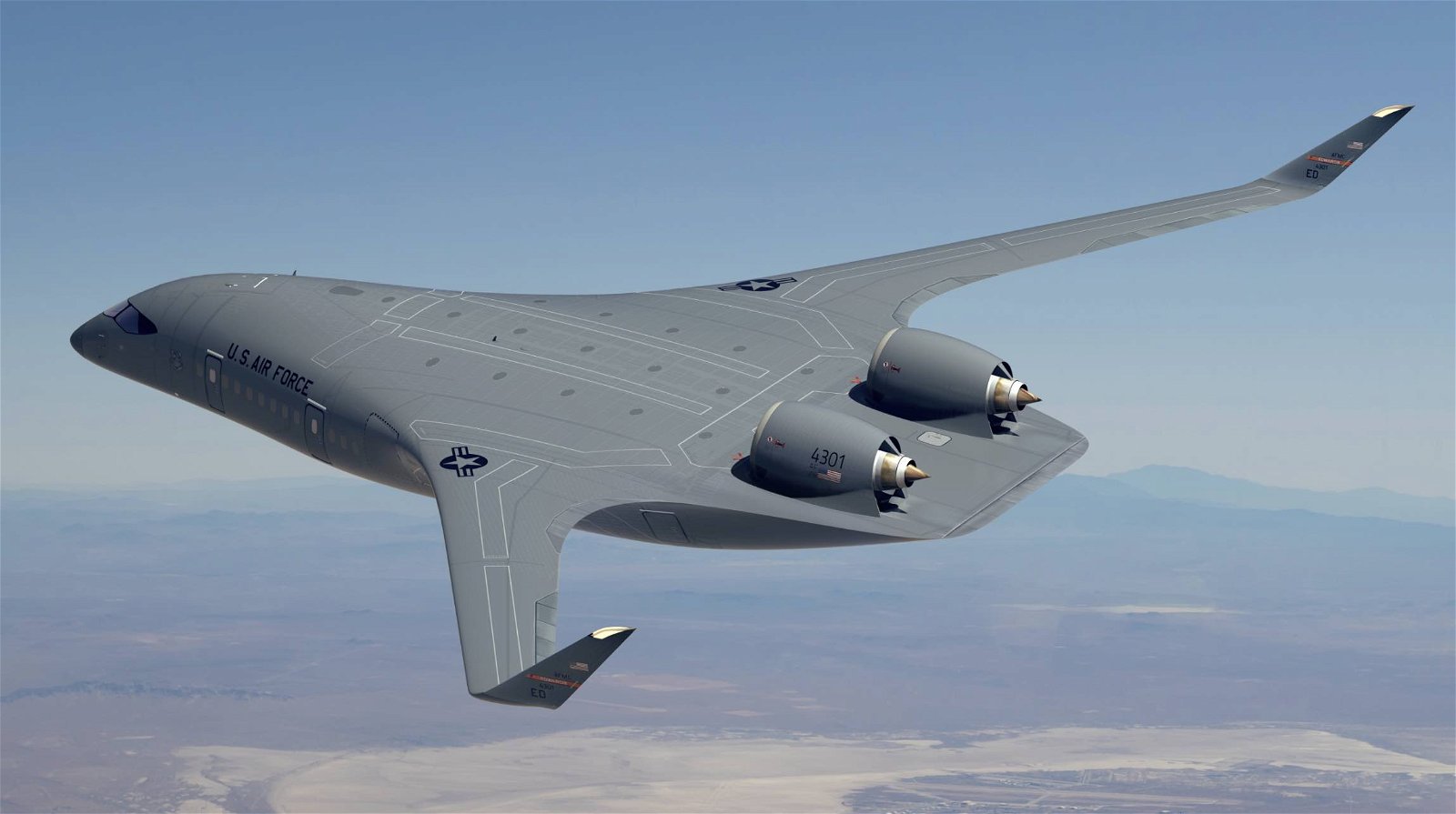The U.S. Air Force is moving forward with plans for developing a blended-wing body (BWB) prototype aircraft capable of extended range, reduced fuel requirements, and increased payload delivery.
On Wednesday the Air Force awarded California aerospace company JetZero $235 million aimed to hasten the development of BWB aircraft designs both for military and commercial industry uses, according to a news release.
With traditional tube-and-wing aircraft designs having already plateaued in terms of enhancements to efficiency, JetZero is designing an entirely new airframe that blends the aircraft body into a high-aspect-ratio wing.
The innovative design reduces fuel usage and emissions by half and drops aerodynamic drag by close to 30%. The increased lift and efficiency BWB aircraft are capable of will extend the overall range, as well as payload delivery and a host of other capabilities for aircraft in the Air Force’s arsenal, which it says “are vital to mitigating logistics risks.”
On Wednesday, Secretary of the Air Force Frank Kendall said BWB aircraft would offer an economical solution to issues related to fuel, range, and other growing demands.
“Moving forces and cargo quickly, efficiently, and over long distance is a critical capability to enable national security strategy,” Kendall said. Based on current estimates, BWB aircraft configurations could conceivably replace several aircraft currently in use by the Air Force, whose total fuel requirements amount to almost 60% of the amount it consumes annually.
The aircraft JetZero is currently developing will also be built with hydrogen propulsion in mind, constructed with the capability for conversion to this zero-emission fuel in the years ahead.
According to a press release the company issued, the $235 million awarded by the DoD’s Defense Innovation Unit will be supplied over a four-year period, and the first demonstrator aircraft is expected to be complete in early 2027.
The company said it will be collaborating with Northrop Grumman, Scaled Composites, and Pratt & Whitney GTF, who will each provide resources for JetZero’s new aircraft development.
The Air Force said on Wednesday that in addition to the $235 JetZero will receive over the next four years, there will be “additional private investment expected” to help speed the new effort.
Although BWB aircraft designs have been studied by agencies like NASA for close to three decades, recent advancements in manufacturing, design, and materials technology have only now enabled practical large-scale production. In recent years, China’s military has also begun to implement BWB designs into unmanned aircraft the country is developing.
Both military and commercial aviation have encouraged the development of more efficient jets, although recent concerns involving the climate have hastened efforts to make such designs a reality. JetZero and its partners believe that zero emissions will be made possible in the coming years, an objective that it has made its central focus.
“The BWB is the best first step on the path to zero carbon emissions,” said JetZero CEO Tom O’Leary on Wednesday.
“It offers 50% lower fuel burn using today’s engines and the airframe efficiency needed to support a transition to zero carbon emissions propulsion in the future,” O’Leary added.
“No other proposed aircraft comes close in terms of efficiency.”
Deptuty Secretary of Defense Kathleen Hicks said in a statement on Thursday that the “projected BWB fuel savings of 30% over traditional aircraft would help mitigate logistics risks and enable critical capabilities such as increased range, loiter time, and offload capabilities.”
“A successful BWB would be good news for the Department, our warfighters, the U.S. aerospace industry and the American taxpayer,” Hicks added.
Micah Hanks is the Editor-in-Chief and Co-Founder of The Debrief. He can be reached by email at micah@thedebrief.org. Follow his work at micahhanks.com and on Twitter: @MicahHanks.

